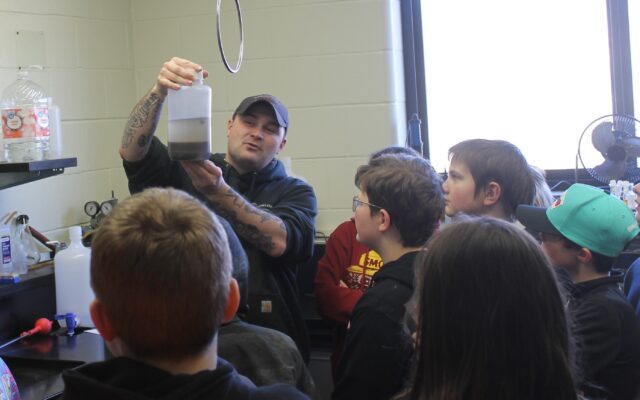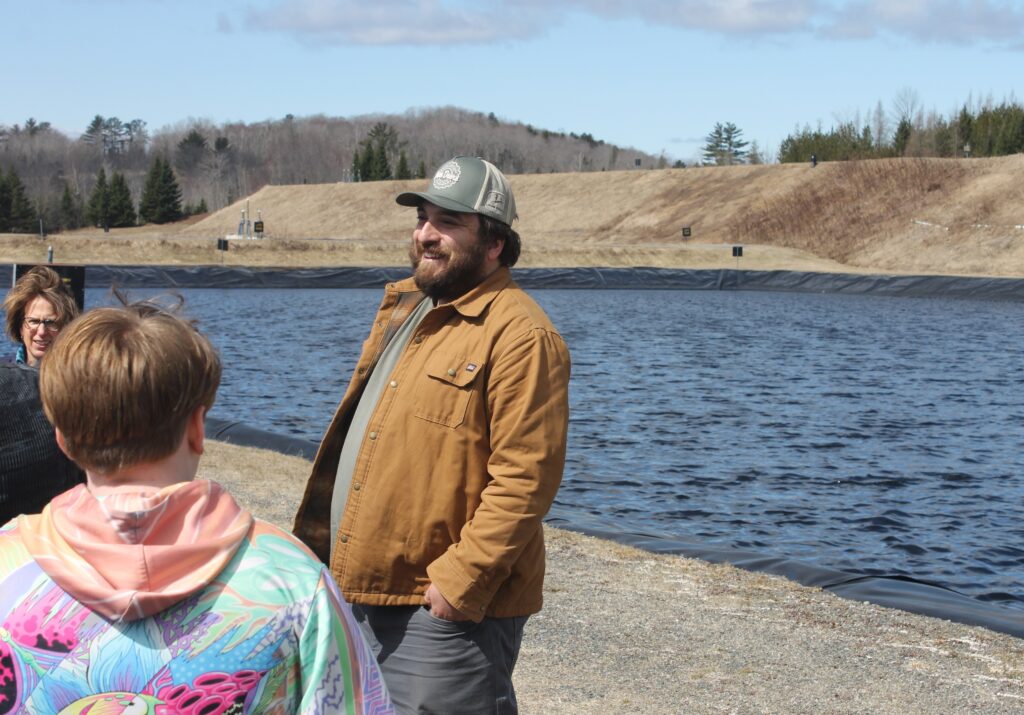
PCES fifth-graders learn how to treat wastewater
GUILFORD — When water goes down the drain or is flushed down the toilet, where exactly does it go and what happens to the liquid? Piscataquis Community Elementary School fifth-graders have been learning about wastewater and the students got to see firsthand with an April 17 field trip to the Guilford Sangerville Utilities District treatment center off Route 15.
Operator Matt Blockler had come into the classrooms as a guest speaker with students learning about design systems to filter water, different types of filtration systems towns can use and what factors influence the chosen filtration system. Blockler also discussed wastewater testing requirements.
After a short ride during the late morning of April 17, the fifth-graders arrived at the treatment center where they met Utilities District Supervisor Cody Smith and operator Jonathan MacNeil along with seeing Blockler again. MacNeil and Blockler handle drinking water and wastewater respectively.
The students split into two groups with Smith taking them up a hill to the lagoons. He explained how the utilities district has four lagoons for treating wastewater with the students standing near the fourth and final manmade body of water. They learned that wastewater is on the premises for about 240 days from once it comes in to being discharged.

WASTEWATER SAMPLE — Matt Blockler of the Guilford Sangerville Utilities District shows Piscataquis Community Elementary School fifth-graders a sample of collected wastewater with the dead bacteria having fallen to the bottom. The students visited the treatment center in Guilford on April 17.
The fourth lagoon was currently about 17 feet deep, Smith said. “It’s basically like a pond,” he said, having recently been frozen over.
Questions from the visitors asked about what happens should someone fall in. Smith said he has not slipped into the water himself but said the plastic around the perimeter makes it nearly impossible to get out. Liferings are placed around the sides of the rectangular lagoon should these be needed
The lagoons contain leeches and the occasional turtle, so Smith said this is even more reason not to want to go swimming in the lagoons. He said the fence around the perimeter keeps out most larger animals but birds, including many ducks and the occasional hawk and eagle, will fly down.
The very first lagoon is located up another hill with bacteria breaking down the waste that comes in. Smith said the filtration system and gravity moves water along when it is ready for the next step in the process.

LAGOONSIDE — Guilford Sangerville Utilities District Supervisor Cody Smith shows the lagoon system to PCES fifth-graders during an April 17 field trip. Students gathered by the fourth and final lagoon used in the wastewater treatment process.
“By this one it’s mostly gone because the food’s all gone and bacteria love food,” Smith said about the cleanliness of the fourth lagoon behind him. He said lots of air is blown in to help the bacteria thrive so the waste can be broken down effectively.
The group seeing the lagoon switched with the other to check out the labs with Blockler where he will test water samples.
“All these bacteria, just like us, they need food and oxygen to live,” he said.
Holding up a plastic container, Blockler showed how the dark-colored dead bacteria have sunk to the bottom. He said microscopes were set up so the students could see what the bacteria looked like. Most of these samples contained dead bacteria so the fifth-graders viewed little to no movement.
Blockler said he routinely conducts biochemical oxygen demand and chemical oxygen demand tests on the wastewater. For biochemical oxygen he fills a bottle with a sample and distilled water. After five days a reading is conducted to see how much oxygen is left. From there Blockler can calculate how dirty the water is, and what adjustments may be needed.